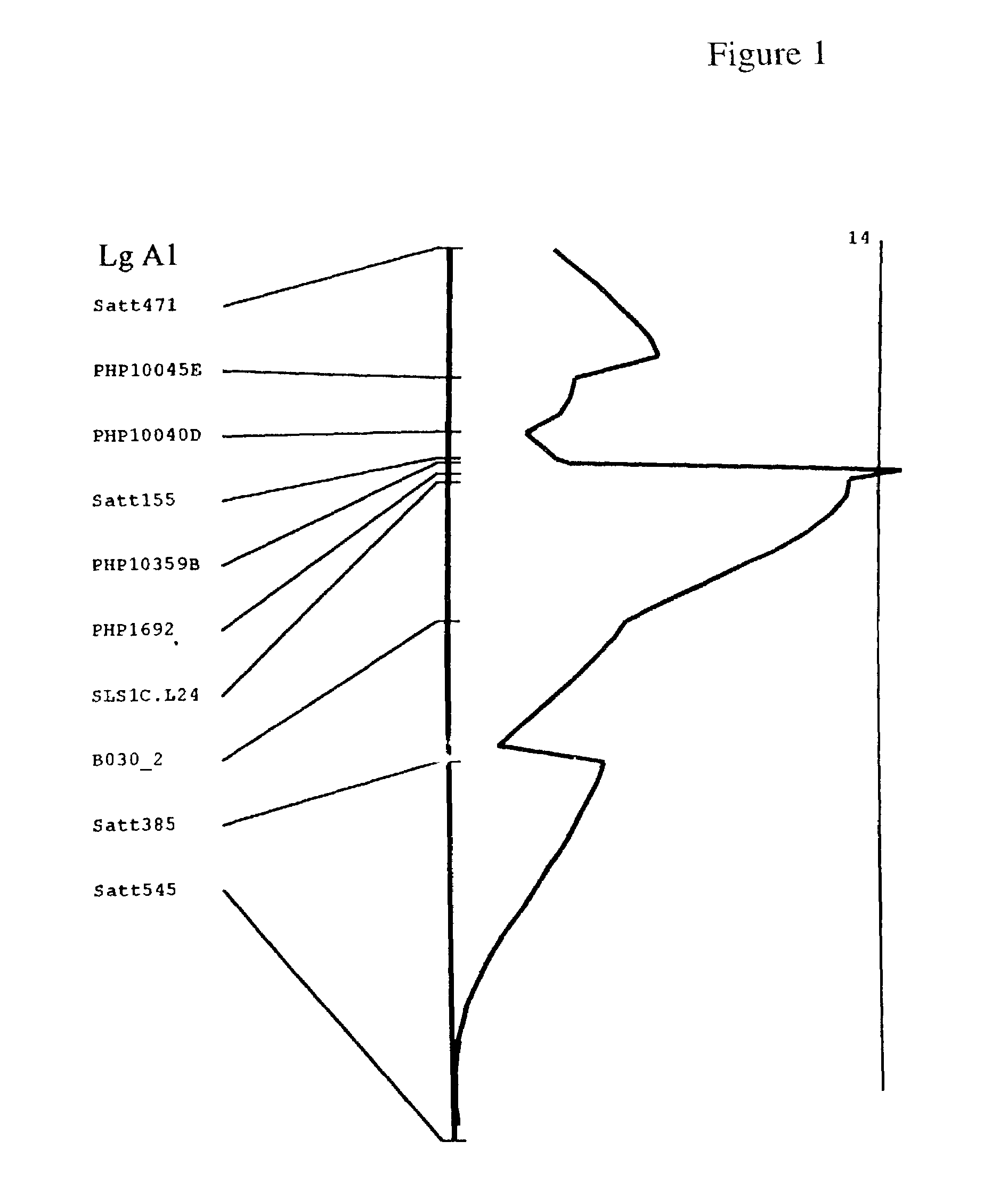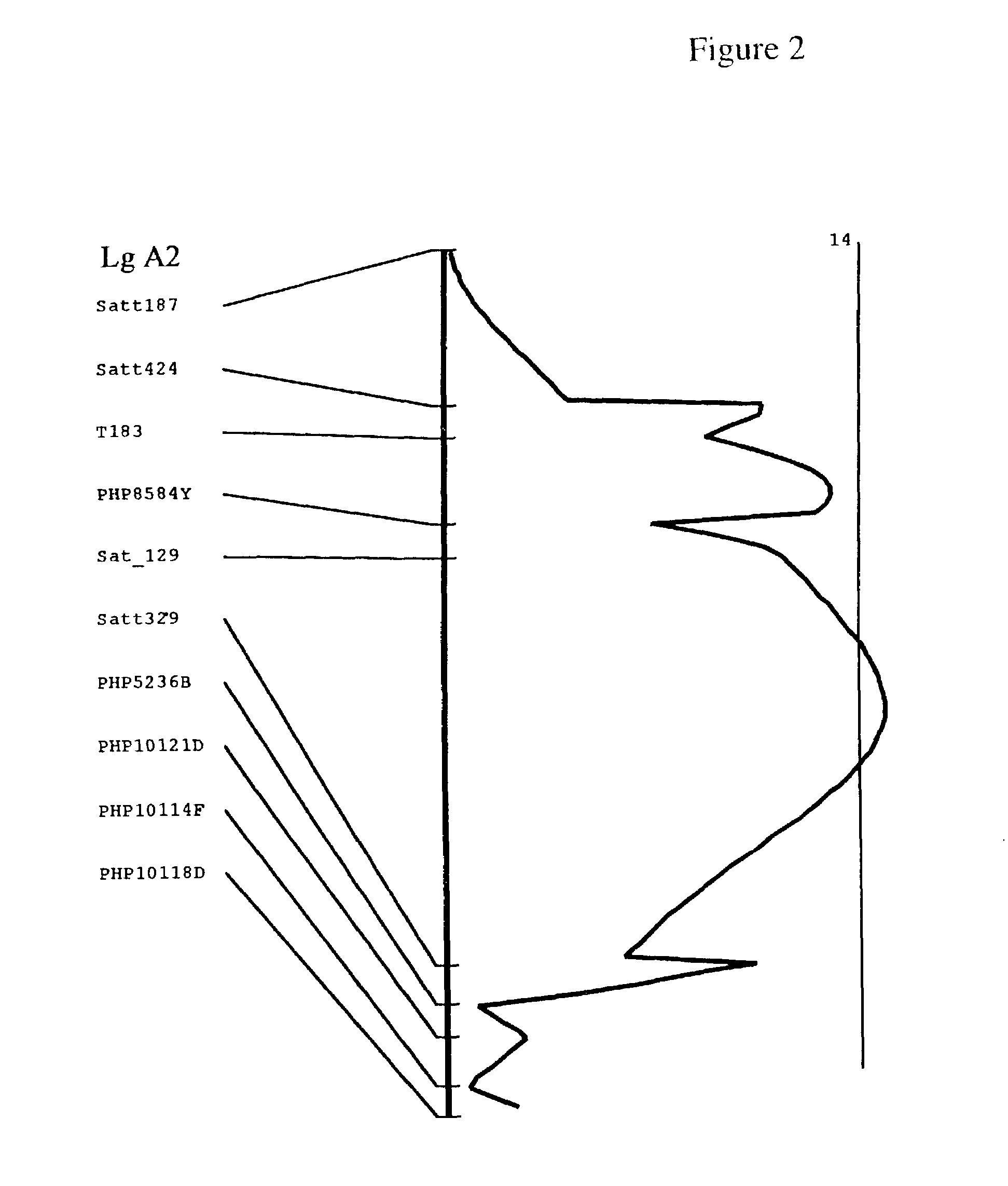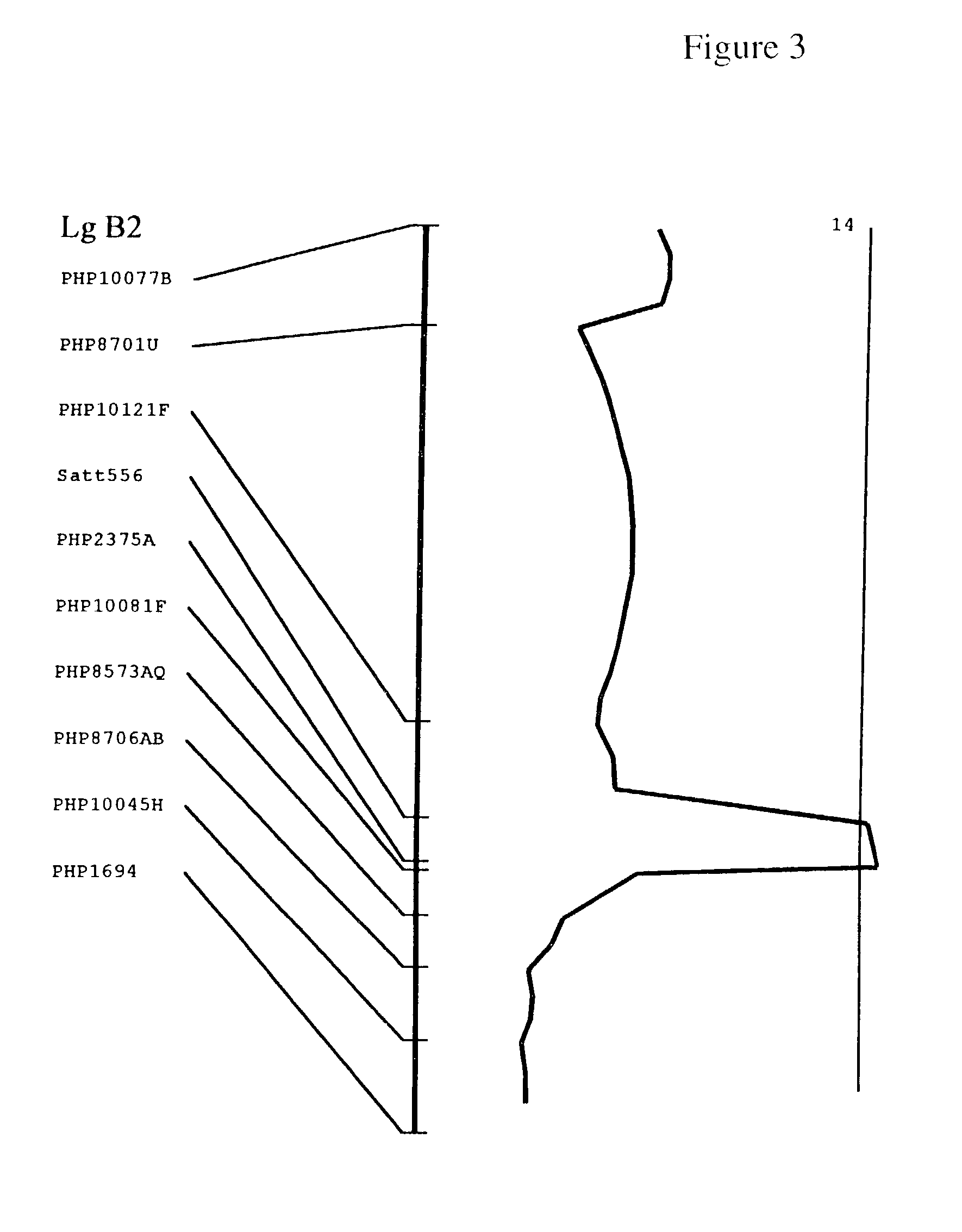QTL controlling sclerotinia stem rot resistance in soybean
a sclerotinia stem rot and soybean technology, applied in the field of plant molecular biology, can solve the problems of disrupting the transport of water and the difficulty of white mold resistance breeding via traditional methods
- Summary
- Abstract
- Description
- Claims
- Application Information
AI Technical Summary
Benefits of technology
Problems solved by technology
Method used
Image
Examples
examples
[0146]The following experimental methods and results provide additional details regarding specific aspects of protocols and procedures relevant to the practice of the present invention. The examples, which are provided without limitation to illustrate the claimed invention, involve the application of protocols well-known to those of skill in the art, and detailed in the references cited herein.
Mapping Population
[0147]A population of 264 recombinant inbred lines (RIL) was derived by single-seed-descent inbreeding from the F2 to the F6 7 generation between a parental line resistant (PR) to Sclerotinia stem rot and a parental line susceptible (Ps) to Sclerotinia stem rot.
Molecular Marker Analysis
[0148]DNA Isolation.
[0149]Soybean DNA was extracted using a variation of the CTAB method (Murray and Thompson (1980) Nucl Acid Res 8:4321–4325; Keim et al. (1988) Soybean Genet Newslett 15:150–152), with the following modifications: lyophilized tissue (750 mg) was powdered by adding 2.5 g glass...
PUM
| Property | Measurement | Unit |
|---|---|---|
| Fraction | aaaaa | aaaaa |
| Fraction | aaaaa | aaaaa |
| Fraction | aaaaa | aaaaa |
Abstract
Description
Claims
Application Information
 Login to View More
Login to View More - R&D
- Intellectual Property
- Life Sciences
- Materials
- Tech Scout
- Unparalleled Data Quality
- Higher Quality Content
- 60% Fewer Hallucinations
Browse by: Latest US Patents, China's latest patents, Technical Efficacy Thesaurus, Application Domain, Technology Topic, Popular Technical Reports.
© 2025 PatSnap. All rights reserved.Legal|Privacy policy|Modern Slavery Act Transparency Statement|Sitemap|About US| Contact US: help@patsnap.com



